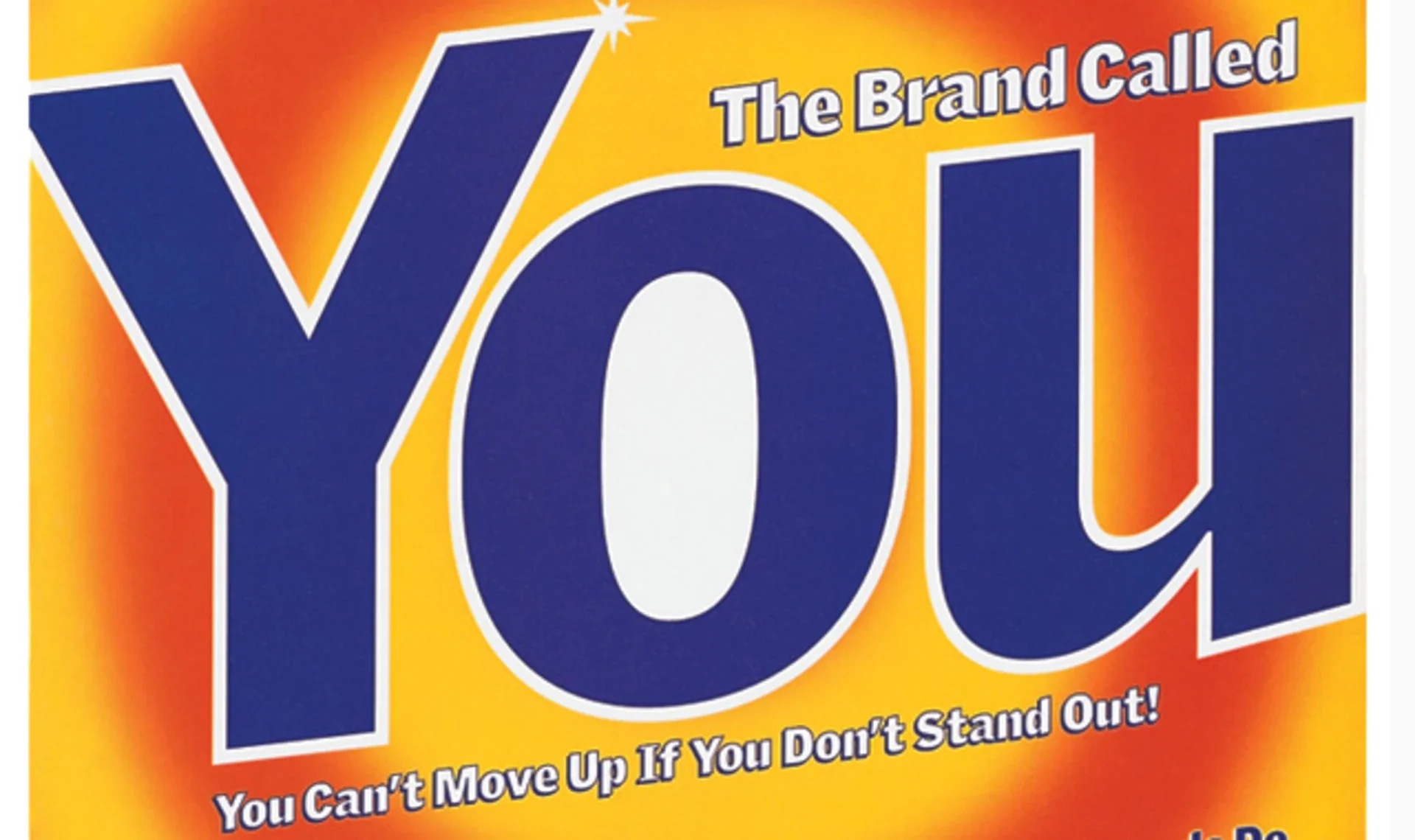[Video] The Importance of Personal Branding and Style
It seems like everyone is talking about personal branding these days, and with good reason. Recent studies show that your personal brand - i.e. how you are perceived on your social media channels - is a big driver of consumer trust. Your customers, prospects, partners, and vendors are increasingly influenced by how you behave on LinkedIn, Instagram, and TikTok. But it’s not just social media that impacts whether or not people choose to do business with you. It’s also how you show up in person - at networking events, tradeshows, business lunches, and other face-to-face interactions.
As the scholars Daniel Lair, Katie Sullivan and George Cheney explain in Marketization and the Recasting of the Professional Self “Here, success is not determined by individuals’ internal sets of skills, motivations, and interests but, rather, by how effectively they are arranged, crystallized, and labeled.”
In this article, we are going to explore the data behind personal branding, why it matters more than ever, and share our most recent Branding and the Beast episode on style. This episode features who esteemed guests in the personal branding, style, and public speaking sphere: Alexis Orchard of Orchard Presents, and Leah Gust, personal stylist. Together, they bring deep insights into the role style plays in business and what you can do to improve your personal brand and style to command more attention. But first, let’s explore the rise of personal branding.
What is Personal Branding?
Personal branding is the strategic method of crafting a brand around who you are as an individual, showcasing your personality, traits, and the value you bring. Personal branding centers around the age-old question of: "How do you want people to feel when they interact with you?" The goal is to create a curated experience these interactions with, ultimately leading to more business, exposure, clout, and so on.
The concept of personal branding can seem a little esoteric. Here are a few examples to help you understand what types of content would fall under the concept of personal branding":
Posts explaining your values and beliefs, and how these impact your leadership style
Behind the scenes “how it’s made” videos, showcasing a process or skill
Though leadership articles that illustrates your unique expertise or methods
“Slice of life” videos sharing your morning exercise routine and how it helps get your though the day
Personal branding may seem commonplace, but not too long ago was an unknown term. Historically, brands were tied to companies rather than individuals, but over the past two decades, there has been a significant shift to the “person as the brand” rather than the “company as the brand.” Why? Let’s explore.
A Brief History of Personal Branding
The origins of personal branding as we know it links back to an essay called “The Brand Called You,” (read the full, delightful article here) written in 1997 by Tom Peters. Within this essay, he explores becoming the “CEO of me.” Indeed, Peters was wildly ahead of his time, pushing individuals to think of themselves as assets rather than assets to a company. “You're every bit as much a brand as Nike, Coke, Pepsi, or the Body Shop,” says Peters. “To start thinking like your own favorite brand manager, ask yourself the same question the brand managers at Nike, Coke, Pepsi, or the Body Shop ask themselves: What is it that my product or service does that makes it different? Give yourself the traditional 15-words-or-less contest challenge. Take the time to write down your answer. And then take the time to read it. Several times.”
The Impact of Social Media on Personal Branding
A major catalyst for the development of personal branding is the rise of social media. Before social media, we had few resources to promote and market ourselves on a wide scale. Imagine placing an ad in the paper or booking a billboard slot to share news about a volunteer engagement, course completion, or business opportunity. But with social media, these types of announcements are part of the everyday habits of millions of professionals around the world.
The Impact of Changing Buyer Demands on Personal Branding
The second catalyst for personal branding is the rise in authenticity and trust as purchasing factors. Over the past 10 years, their has been an exponential increase demand for companies to develop authentic, one-to-one relationships with their customers. In addition, customers began to push for companies to share their stances on topics and communicate their values, rather than act as neutral, faceless companies. Much of this was spurred by an organic shift in increasingly aware and ethically-minded consumers - think of when the movie Blackfish came out, or the the Raza Plaza collapse in Bangladesh.
And the pandemic only acted as an incubator for this shift in value-based buying. A 2021 study from TrustPilot revealed that 50% of customers felt that it was important for the companies they do business with to take a stance on issues. Just two years later, in 2023, a report by Edelman showed that 71% of consumers say they’ll lose trust in a brand forever if they perceive it as putting profit over people.
How Personal Branding Intersects Corporate Branding
Your personal brand is now a key driver of how consumers perceive your company. How the employees of a company are viewed by consumers - their attitudes, values, what they post, how they present themselves - is often as important as the company’s brand itself. In 2024, we wrote about the power of the c-suite being active on social media after discovering this stat: 77% of consumers are more likely to do business with a company when the CEO has a social media presence.
Ever notice that individual social media profiles have a much higher following than company pages? You eyes aren’t playing tricks on you. This fascinating study from FTI Consulting revealed that:
92% of professionals say they are more likely to trust a company whose senior executives are active on social media.
Companies with at least four active executive leaders experience a 38% higher digital impact than those with fewer.
When company leaders post, their individual content generates 300% more comments and 200% more engagement compared to company pages.
Take a look at the LinkedIn follower count of Richard Branson, Founder of Virgin. He has over 18 million followers - more than all of the major Virgin company profiles combined.
This excerpt from Tom Peters and his personal branding manifesto drives the point home: “Almost every professional services firm works with the same business model. They have almost no hard assets -- my guess is that most probably go so far as to rent or lease every tangible item they possibly can to keep from having to own anything. They have lots of soft assets -- more conventionally known as people, preferably smart, motivated, talented people. And they have huge revenues -- and astounding profits.”
Quick Considerations to Improve Your Personal Branding and Style
As we discuss in our Branding and the Beast episode (below), the first step towards improving your personal branding and style is to simply consider it. Once you are aware and actively thinking about how you are presenting yourself virtually and in person, you are already developing a personal brand. Consider:
What’s the first thing people notice about you? Pro tip: You have to ask them to find out.
What do you want them to notice first?
How do you introduce yourself?
What three, unique words would you use to describe yourself as a professional?
What do you wear at your office, while in a webinar, or meeting a customer? Are you a sweatshirt and technical polo kind of person or a dress shirt and cashmere sweater kind of person?
What does your office background look like? Do you have a virtual background? If not, what appears in your background?
What does your LinkedIn headshot look like? Do you even have a LinkedIn headshot? Fun fact: LinkedIn research shows that just having a profile picture makes your profile 14 times more likely to be viewed by others.
Consider how you can incorporate the three pillars of charisma, as featured in the NYTimes: presence, power, and warmth
The idea that you either have style or you don’t is outdated. We all have style and personal elements that make us compelling, it just takes a little strategy to uncover them.
Watch the Video: Branding and the Beast on Personal Style
Your style is partially what you wear, but it's so much more than that. Style includes how you show up, how you walk into a room, even how you enter a virtual room. Your style is also the first thing that people notice about you, and for business owners that usually means the first thing people notice about your business. What are you telling the world about yourself? Hint: you're usually not saying what you think you are! We're joined by two style experts: style consultant Leah Gust, and speaking coach Alexis Orchard, to look at all things style.
Watch to learn more about:
The importance of personal style and confidence
How to present yourself on video
Why public speaking skills are more important than ever
Tips to improve your image and command a room





![[Video] The Importance of Personal Branding and Style](https://images.squarespace-cdn.com/content/v1/520554d2e4b004c7f36bec69/1763501803563-Z9ETS8FKI0MHAGDHVIQS/personal+branding.jpg)
![[Video] Kindness as a Brand with Rafi Yablonsky](https://images.squarespace-cdn.com/content/v1/520554d2e4b004c7f36bec69/1722997677979-3HT93CR4AMNWKEL2OJYI/BRANDING+S2+E8.jpg)
![[Video] Internal Branding and Company Culture with Aaron Metzger](https://images.squarespace-cdn.com/content/v1/520554d2e4b004c7f36bec69/1703696330734-N87904HVBEU3NR46IRZJ/s2e6+thumb.jpg)